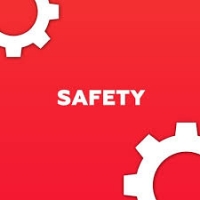According to 2015-16 statistics released by the UK's Health and Safety Executive's website, a whopping 621,000 people sustained a non-fatal injury on work premises this year.
Young people seem to be particularly vulnerable: a few years ago The Guardian revealed that, in the UK alone, nearly 4,500 people under the age of 25 are seriously injured or even killed at work each passing year.
Although the numbers of self-reported work injuries seem to be on the decline overall since 2010-11, without proper supervision and training, work can become a very hazardous place.
Here we look at some of the most frequent work injuries you could claim compensation for.
- Whiplash
Neck sprains, sometimes more commonly called whiplash injuries, occur when the tendons and ligaments in the neck area get suddenly overstretched.
There are two different kinds of whiplash injuries. Direct whiplash happens when one is directly hit in the back of the neck; it's also very dangerous as it can cause irremediable damages to the spine and in some extreme cases paralysis and even death.
Indirect whiplash injuries are most common and occurs in car accidents for instance. A more straightforward type of neck sprain, they're also the ones most likely to happen at work if you have to use a vehicle during your shift and can be very debilitating, include vertigo and temporary visual impairment and most definitely require some time off and compensation.
2. Back injuries
Back injuries feature in the most common types of injuries to ever occur in the workplace. They tend to happen when lifting or pulling heavy objects but can even be provoked by a bad posture, simply sitting improperly at work. Experts differentiate two types of back pain that can be caused either in a non-accidental or accidental context.
Bad posture or sitting improperly for prolonged length of time falls into the non-accidental category. On the other hand, accidental back pain injuries are caused by sudden and unexpected events such as when lifting heavy objects or slipping and falling during physically demanding jobs.
3. Slipping and tripping
Most injuries due to a bad fall tend to be superficial and involve soft tissues injuries. Unfortunately, in a large number of other cases, slip and falls can result in harder injuries such as fractures and head traumas. Most slip and falls injuries are due to improper training or poor working conditions and environment and could easily be avoided with preventive risk assessment in the workplace.
4. Hand and wrist injuries
Hand and wrists injuries are also found to be some of the most prominent types of injuries to ever plague work environments, affecting 1 in 4 persons to find themselves injured at work. Repetitive stress hand injuries such as carpal tunnel syndrome are very frequent in jobs requiring repetitions of the same movement over and over. Symptoms of this very debilitating condition can include numbness, tingling and difficulties to pick up things in general.






